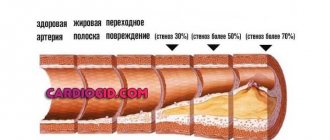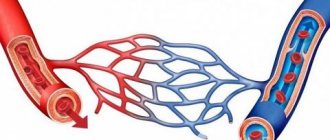Hemolytic anemia is a group of rare pathological conditions, which is characterized by a disruption of the life cycle of red blood cells, or more precisely, by the predominance of their decay processes over their formation and development. As a result, a large number of their breakdown products are observed against the background of accelerated erythropoiesis - formation. Normally, the lifespan of red blood cells is from one hundred to one hundred and twenty days; with anemia, it is reduced to fifteen to twenty days. Destructive processes occur not only in blood vessels, but also in the spleen, bone marrow and liver.
The Department of Hematology at CELT offers diagnostics and treatment of hemolytic anemia in Moscow. Our clinic is one of the pioneers in the market of professional paid medical services in the Russian Federation. For the third decade now, we have been relieving our patients of serious diseases, improving their quality of life. Our hematologists have a powerful diagnostic and treatment base, which allows them to accurately and quickly make a diagnosis and carry out treatment according to international standards. You can find out the price of appointments and procedures in the “Services and Prices” section. To avoid misunderstandings, we ask you to check the numbers with our information line operators: +7 (495) 788 33 88.
Causes of anemia
The causes of anemia are varied and depend on the type of disease. The main ones are:
- disruption of bone marrow production of red blood cells. This can be facilitated by oncological and endocrine diseases, kidney disease, chronic infections, protein depletion;
- lack of substances necessary for the production of hemoglobin: iron, folic acid, vitamin B12, in some cases vitamin C, pyridoxine;
- prolonged acute or chronic bleeding. The main parts of red blood cells are able to recover, but this does not apply to iron. Severe blood loss depletes its reserves in the body, which leads to anemia.
What to do?
If you feel unwell or if you notice symptoms similar to anemia, contact your local physician immediately. After the examination, the doctor will direct you to undergo tests, on the basis of which appropriate treatment for anemia or additional research will be prescribed.
For patients who neglect their health and let everything take its course, we strongly recommend looking on the Internet for photos with manifestations of anemia.
Classification of anemia
Anemia itself is not a disease, but it is a symptom of some diseases. Anemia is divided according to a single classification criterion - a color indicator, which demonstrates the level of saturation of the red blood cell with hemoglobin.
The following anemias are distinguished:
Hypochromic anemia:
- Iron-deficiency anemia. It occurs due to a lack of iron in the body and is rather a symptom that signals the presence of other disorders. The main source of iron is food. This type of anemia may indicate an insufficient or undiversified diet. Some people also have poor iron absorption, for example after major blood loss or removal of part of the stomach, cancer, stomach ulcers, or other diseases.
- Thalassemia.
Normochromic anemia:
- Hemolytic anemia. With this condition, the lifespan of red blood cells is significantly reduced. This anemia can be hereditary or acquired. In the first case, the problem lies in genetic abnormalities in the structure or function of red blood cells. Acquired hemolytic anemia develops due to excessive destruction of red blood cells due to exposure to antibodies, toxins and other factors. This form of anemia can be distinguished by the yellowish tint of the skin. It appears due to an increase in the level of bilirubin, which is formed during the destruction of red blood cells.
- Posthemorrhagic.
- Neoplastic bone marrow diseases.
- Aplastic anemia.
- Extramarrow tumors.
- Anemia due to decreased production of erythropoietin.
Hyperchromic anemia:
- Vitamin B12 deficiency anemia. It occurs due to a lack of vitamin B12, which is necessary for the normal maturation and growth of red blood cells in the bone marrow, as well as the stable functioning of the nervous system. The disease can be suspected by tingling and numbness in the fingers and an unsteady gait. Pernicious anemia occurs due to the lack of enzymes, due to which the stomach cannot absorb vitamin B12, the presence of parasites in the body, etc.
- Folate deficiency anemia.
- Myelodysplastic syndrome.
Signs of hereditary form
Hereditary forms of the disease manifest themselves no less clearly. The clinical picture appears almost from birth.
Possible symptoms include:
- Mechanical jaundice. As in the case described above.
- Cholecystitis. Inflammation of the gallbladder. Occurs in almost half of patients. It is also likely that stones will form in a small organ over time. Then you cannot do without surgery.
- In 30-40% of patients the liver becomes enlarged. This is clearly visible on ultrasound. Patients, even in remission, need to undergo regular ultrasound examinations. At least once every six months. According to indications or if there is a doctor’s recommendation - once every 3 months or more often.
- Hemolytic anemias cause the spleen to grow. Doctors, as a rule, choose a wait-and-see approach. That is, they look at how the organ will behave further.
The lack of dynamics is considered a plus. If the spleen continues to grow despite treatment, it must be removed. The task is not so difficult, but you should not wait for the organ to rupture. That's why it's so important to see a doctor earlier.
- Change in urine color. Urine becomes reddish. But there are no blood impurities in it. Also, in advanced forms, if there is a massive breakdown of red blood cells, the shade becomes dark. Almost black.
- Change in stool color. To rich brown. This is the result of the influence of the pigment bilirubin. Specific indicator.
Symptoms of the hemolytic form of anemia are characteristic, so doctors do not have difficulty recognizing the disease. Basic diagnostic measures are sufficient.
Hemolytic syndrome in 5-10% of cases provokes a full-fledged crisis state. During such an episode, the temperature rises and the pressure rises. Problems with consciousness and disorders of higher nervous activity arise. The patient may fall into a coma and die from the manifestations and course of the disease.
Symptoms of anemia
Shcheglova Raisa Alexandrovna
doctor therapist
There are a huge number of types of anemia. They are all treated differently. At SM-Clinic, all patients are carefully examined to determine the causes of this syndrome. This may be a lack of iron, vitamins, intravascular destruction of red blood cells or a violation of their formation in the bone marrow. The most common is iron deficiency anemia, for the treatment of which it is enough to eliminate recurring bleeding and replenish the lack of iron in the body with the help of special medications.
Each type of anemia has its own symptoms and characteristics of the course of the disease. However, there are a number of common signs of anemia, including:
- pale skin;
- fast fatiguability;
- loss of appetite;
- decreased performance and concentration;
- dizziness;
- headaches, tinnitus, spots before the eyes;
- fainting;
- pain in the heart that occurs even at rest;
- shortness of breath with little physical exertion or at rest.
Treatment of anemia
The treatment regimen should be selected by a doctor based on the type of disease, its severity and diagnostic results. For each type of anemia, the main directions of therapy can be identified.
Iron-deficiency anemia:
- eliminating the cause of iron deficiency;
- following a diet high in iron;
- taking iron supplements;
- transfusion of red blood cells (in severe forms).
Hemolytic anemia (the type of therapy depends on the cause of the disease):
- taking glucocorticosteroids for autoimmune causes;
- taking immunosuppressants;
- splenectomy;
- replenishment of enzyme deficiency;
- plasmapheresis (removal of plasma containing toxic elements from the blood);
- transfusion of donor red blood cells;
- bone marrow transplantation, etc.
Pernicious anemia:
- diet;
- replacement therapy with B12 drugs.
Sickle cell anemia (there is currently no treatment that will once and for all get rid of this disease, but patients need therapy that eliminates symptoms and helps prevent the formation of a large number of sickle-shaped red blood cells):
- increasing the amount of hemoglobin and red blood cells;
- elimination of excess iron in the body;
- correct lifestyle;
- elimination of pain syndrome;
- prevention and treatment of infectious diseases.
Diagnostics
One of the first steps in the process of diagnosing hemolytic anemia should be to determine the type of disease. Understanding whether the hemolysis of red blood cells is intracellular or intravascular will make it possible to move on and understand where to look for the cause of the destruction of blood cells.
Stage I
A number of studies will help to accurately confirm the type of disease. If we talk about intracellular hemolysis, it is determined by the following diagnostic methods:
- hemoglobinemia, when checking the presence of free hemoglobin;
- hemosiderinuria, when the presence of hemoglobin and hemosiderin oxidized in the kidneys is checked in the urine;
- hemoglobinuria, when the presence of unchanged hemoglobin in the urine is checked.
If we talk about intravascular type hemolysis, it can be confirmed by the following types of studies:
- a general blood test, which can show a picture of a decrease in red blood cells and with them hemoglobin, if its level has also fallen, as well as an increase in the reticulocyte count;
- a biochemical blood test, which will show the level of bilirubin, whether it is increased, which is inherent in this form;
- a smear of peripheral blood, which makes it possible to examine abnormalities in the structure of the erythrocyte.
When the type of hemolysis is determined and confirmed, the specialist begins to work to determine the reasons that caused the abnormalities in the blood structure.
Stage II
Many reasons can lead to the development of the disease. In order to accurately establish what exactly caused the onset of hemolytic anemia in each specific case, it is necessary not only to take blood tests, but also to study in detail the history of impaired functioning of the body.
Doctors need to find out everything about the patient, namely: the territories and places where the patient has been in the last 6 months, his living conditions, symptoms and the order of manifestation of signs of the disease, the intensity of the disease. If it is not possible to establish such information, much more tests are carried out to determine the diseases that the patient often suffers from and which can provoke the breakdown of red blood cells.
At the second stage, the following analyzes are carried out:
- Coombs tests - can be direct or indirect, carried out to establish the fact of autoimmune anemia, which is confirmed if the test detects circulating immune complexes;
- hemoglobin electrophoresis - makes it possible to exclude hemoglobinopathies, thereby confirming that this is not thalassemia or sickle cell anemia;
- sucrose tests are Hem and Hartman tests, which help determine the period of existence of the patient’s red blood cells. A blood sample is placed in sucrose or an acidic solution, which accelerates the process of breakdown of blood cells, which makes it possible to estimate the percentage of breakdown. If 4-5% of them are destroyed, then the samples are positive. This confirms paroxysmal nocturnal hemoglobinuria;
- circulating type immune complexes;
- test for the presence of Heinz bodies - determines the presence of insoluble hemoglobin in the blood, which becomes a kind of inclusion. These additions can be seen using a dark-field microscope or even an ordinary microscope, but using special staining;
- studying the enzymatic activity of an erythrocyte - first they check for the presence of enzymes, and then examine them using a polymerase chain reaction, which makes it possible to establish enzymopathies in erythrocytes;
- osmotic resistance of blood cells - the resistance indicator is determined, which decreases with congenital hemolysis;
- myelogram - performed by removing part of the bone marrow, that is, performing a puncture. Makes it possible to identify malignant tumors that can actively influence the destruction of blood cells;
- studying a “thick drop” of blood makes it possible to establish the presence of malarial pathogens that are associated with the process of destruction of red blood cells;
- blood culture - tank culture is done to establish what infections are in the blood that interact with red blood cells and cause their destruction directly or through immune mechanisms;
- test for sickling of erythrocytes - changes in the structure of erythrocytes are examined due to changes in the level of oxygen pressure. Sickle-shaped red blood cells are a sign of the sickle cell form of the disease.
These are the main types of studies that are performed when studying patients with hemolytic anemia. But there are other types of tests that can be additionally prescribed by the attending physician.
Prevention of anemia
To prevent anemia, it is first necessary to adhere to a balanced, vitamin-rich diet. Because women lose a lot of iron during menstruation, they should pay close attention to their hemoglobin levels.
| Name of service (price list incomplete) | Price, rub.) | In installments* |
| Appointment with a hematologist, therapeutic and diagnostic, primary, outpatient | 1750 | — |
* You can read more about the conditions here - Treatment on credit or in installments.











